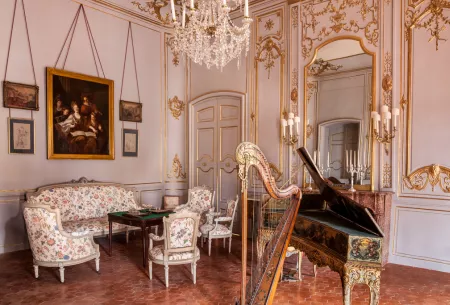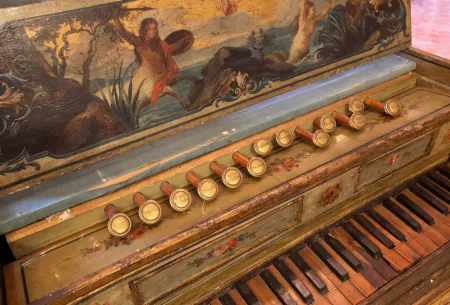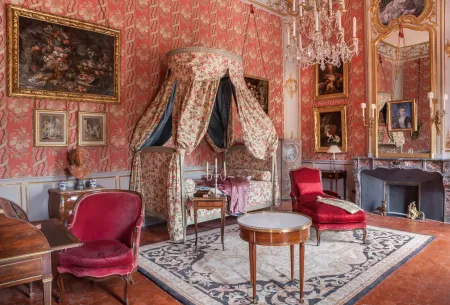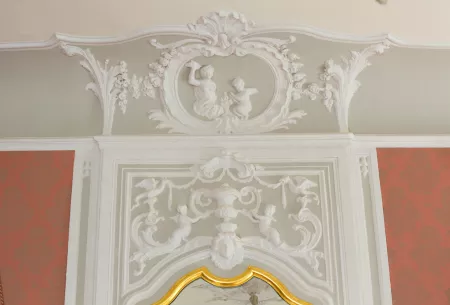The art center is open every day from 10 a.m. to 6 p.m., including December 25 and January 1st.
Historical rooms
The Hôtel de Caumont thus had room dedicated to music and the playing of instruments. It was also an important place for socialising as music played a central role in the social life of 18th century high society.

Music Room
The private apartments of the Hôtel de Caumont and their rich decor are perfect examples of the ambitions of its various occupants. At the time, one trend in particular reflected the high social status of house owners in the Mazarin quarter: specialised rooms, usually reserved for high nobility and princely palaces. The Hôtel de Caumont thus had room dedicated to music and the playing of instruments. It was also an important place for socialising as music played a central role in the social life of 18th century high society.
In 1742, the Rolland de Réauville family demonstrated their passion for music when they ordered an organ. Unfortunately it is no longer in the house (the Marquise de Réauville sold it on 5 february 1761 ans it can now be found at the Saint-Sauveur d'Aniane Abbey). The drawing room presented here evokes the typical features of an 18th century music room in Aix-en-Provence.

In the middle of the room stands the frame of a harpsichord built in the early 18th century, which shows the luxurious decoration of the instrument. The same attention to decoration can also be seen in the fine maple carvings topped with gilding that ornate the console of the harp made by the famous instrument maker, Jean Henri Nadermann.
Four senses are represented in the gilt plasterwork of the ceiling. Sight is depicted by two putti observing the sky with a pair of binoculars and globe, hearing is depicted by putti giving a concert, taste seems to be symbolised by two putti sitting in front of a pastry, and the sense of touch is evoked by two putti sculpting a bust.

Pauline's Bedroom
This room exhibits the happy youth of this beautiful young lady growing up in Aix. After the death of Louis XIV in 1715, the 18th century rediscovered intimacy, alcoves and boudoirs. The pomp of Versailles gave way to a more relaxed and easy-going lifestyle. Interiors became places where extravagance met comfortable living. The Polish-style bed shown in this room is typical of the taste for alcoves and intimate spaces in the Louis XV era.
It is also the epitome of the Rococo style, which is well depicted on the walls of the room and the gilt console under the mirror. The decorative arts shifted towards the trend for scrolls, plant and mineral motifs in which nothing appears to be symmetrical and everything takes on shell and foliage curled forms. The natural curves and fanciful spirit at the heart of the Rococos style contributed greatly to creating a warm and intimate atmosphere.

The plasterwork is less ornate than in the order rooms and gives off a more intimate and casual dimension with its Middle-Eastern monkeys. One seems to tip its hat to visitors while the other plays on a swing. Above them, decorative framing features putti playing with floral garlands. This decor came later and dates back to the Bruny family era, as seen on the family coat of arms with the stag above the central trumeau.
